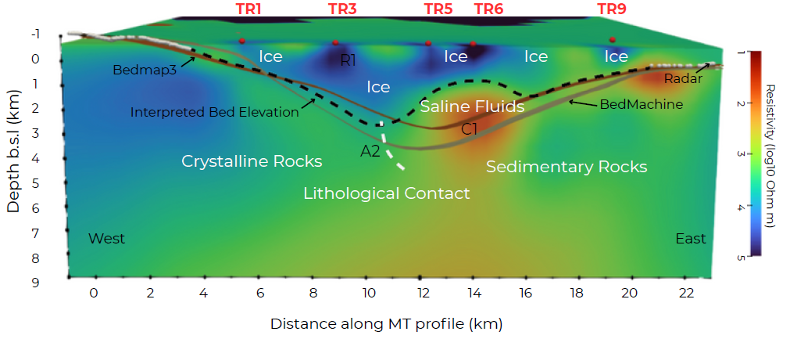We are excited to invite you to the 13th seminar of the 2025 Geology and Geophysics Seminar Series, featuring Maria (Coti) Manassero, a post-doctoral research fellow in Geophysics, School of Natural Sciences (Physics), University of Tasmania. Coti will be presenting on “Thickness and ice loss potential of Denman Glacier, East Antarctica: Insight from magnetotelluric data and interdisciplinary studies“. In this engaging talk, she will share novel insights into the basal structure of Denman Glacier, revealed through cutting-edge geophysical imaging, and discuss their implications for ice sheet stability and sea-level projections.
Date: July 16, 2025
Time: 11:00 a.m. – 12:00 p.m. AEST
Location: Room 449 (Conference Room), Madsen Building (F09), School of Geosciences
or Online (Join via zoom)
We look forward to seeing you there in person or joining us online!
https://uni-sydney.zoom.us/j/84796471781?from=addon
Thickness and ice loss potential of Denman Glacier, East Antarctica: Insight from magnetotelluric data and interdisciplinary studies
Abstract
Understanding the basal conditions of East Antarctica’s outlet glaciers is critical for improving projections of ice sheet stability and global sea-level rise. Denman Glacier, one of the continent’s deepest and fastest-flowing glaciers, has the potential to contribute over 1.5 meters to sea-level rise. Its grounding line lies on a retrograde slope within the Aurora Subglacial Basin, making it highly susceptible to Marine Ice Sheet Instability. However, uncertainties in bed topography and subglacial conditions, particularly in deep, radar-shadowed troughs, limit the accuracy of current ice sheet models.
In this study, we present the first geophysical imaging of Denman Glacier using magnetotelluric (MT) data, collected during the 2023/24 Denman Terrestrial Campaign. The resulting 3D resistivity model reveals a vertically continuous resistive ice layer overlying a sharp transition to more conductive material, interpreted as the ice–bedrock interface zone (IBIZ). The MT model identifies a central topographic high and a less extreme trough geometry than previously estimated, diverging from bed elevation models. Conductive anomalies beneath the glacier, particularly at the topographic high, are interpreted as fluid-rich till or saline porewater in sediments, indicating enhanced basal lubrication and potential for faster ice flow. These findings provide new constraints on Denman Glacier’s basal structure, with implications for grounding line stability, subglacial hydrology, and meltwater routing. By improving the resolution of bed geometry and substrate properties, this work enhances the physical basis for ice sheet models and supports more accurate projections of Antarctic ice loss. Our results underscore the need for expanded MT coverage and integrated geophysical surveys to refine ice sheet models and improve predictions of Antarctic ice loss.
Graphical Abstract

![]()

